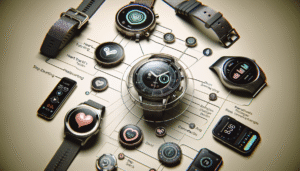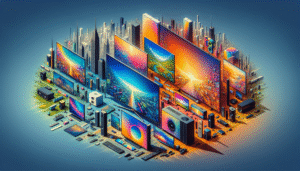Virtual reality
The future of virtual reality: Immersive experiences beyond imagination
The future of virtual reality: Immersive experiences beyond imagination
Virtual reality (VR) has been one of the most exciting technologies in recent years, providing immersive and engaging experiences across a variety of industries. From gaming and entertainment to education and training, VR has the potential to transform the way we interact with the digital world. In this article, we will explore the future of virtual reality, highlighting technological innovations and fascinating possibilities that are beyond our imagination.
Advances in hardware
Advances in hardware technology are driving the evolution of VR. Companies are investing in lighter, more compact and comfortable devices, which provide an immersive experience without compromising user comfort. Additionally, improved screen resolution and reduced response lag are making images clearer and more realistic.
Integration with augmented reality
The integration of virtual reality with augmented reality (AR) is a promising trend for the future. This combination will allow users to experience virtual environments superimposed on the real world, merging virtual and physical elements. Imagine exploring interactive museums or shopping in online stores while in the comfort of your home. your home.
Applications beyond entertainment
While gaming has been the main focus of virtual reality to date, its potential goes far beyond entertainment. Sectors such as education, medicine, architecture and training are actively exploring the use of VR to improve experiences and provide more realistic simulations. For example, medical students can practice virtual surgeries and architects can visualize full-scale projects before construction even begins.
Redefining social interactions
VR has the power to redefine social interactions, allowing people to connect in shared virtual environments regardless of physical distance. With VR, it is possible to participate in virtual meetings, live events and even interact with friends and family in a virtual environment, providing a feeling of presence and closeness.
Immersive experiences for tourism
The travel industry is also embracing virtual reality to offer immersive experiences before travelers even embark on an adventure. Through 360-degree videos and virtual tours, travelers can explore popular destinations and landmarks, enabling them to preview and make more informed decisions about their trips.
Access to live events and shows
With the COVID-19 pandemic, many events and shows were canceled or had audience restrictions. However, virtual reality can provide an alternative solution. VR live streaming allows people to watch concerts, conferences and sporting events as if they were physically present, creating an immersive and interactive experience.
Therapeutic potential
Virtual reality is also being explored as a therapeutic tool in areas such as mental health. Virtual therapies are being developed to treat phobias, post-traumatic stress disorder and anxiety, offering safe and controlled environments for gradual exposure to triggering stimuli.
Conclusion
The future of VR is full of exciting possibilities. With continued technological advancements, we can expect immersive experiences beyond our imagination. Integration with augmented reality, use across sectors, redefined social interactions and therapeutic potential are just some of the areas being explored. As virtual reality continues to evolve, we can look forward to a future where the line between the real and digital worlds becomes increasingly blurred.
Click here and see, virtual reality devices available on Amazon Brazil.
FAQ (Frequently Asked Questions)
1. What is the difference between VR and augmented reality?
Virtual reality creates a completely digital environment, immersive and separate from the real world. Augmented reality superimposes virtual elements on the real world, merging the digital with the physical.
2. Is virtual reality safe?
Yes, VR is safe when used correctly. It is important to follow the manufacturer's instructions, take regular breaks and not use technology in situations that could compromise safety, such as driving a vehicle.
3. What are the limitations of virtual reality?
Some limitations of VR include the need for specific devices, the cost associated with the technology and the possibility of causing discomfort in some people, such as dizziness and nausea.
4. Will VR completely replace real-world interactions?
While virtual reality can provide immersive experiences, it is unlikely to completely replace real-world interactions. However, it has the potential to complement and improve several areas of our lives, from entertainment to education and health.
5. What are the future applications of virtual reality?
The future applications of virtual reality are vast and include advances in areas such as medicine, education, tourism, training and communication. The potential of the technology is immense and will continue to evolve in the coming years.
















